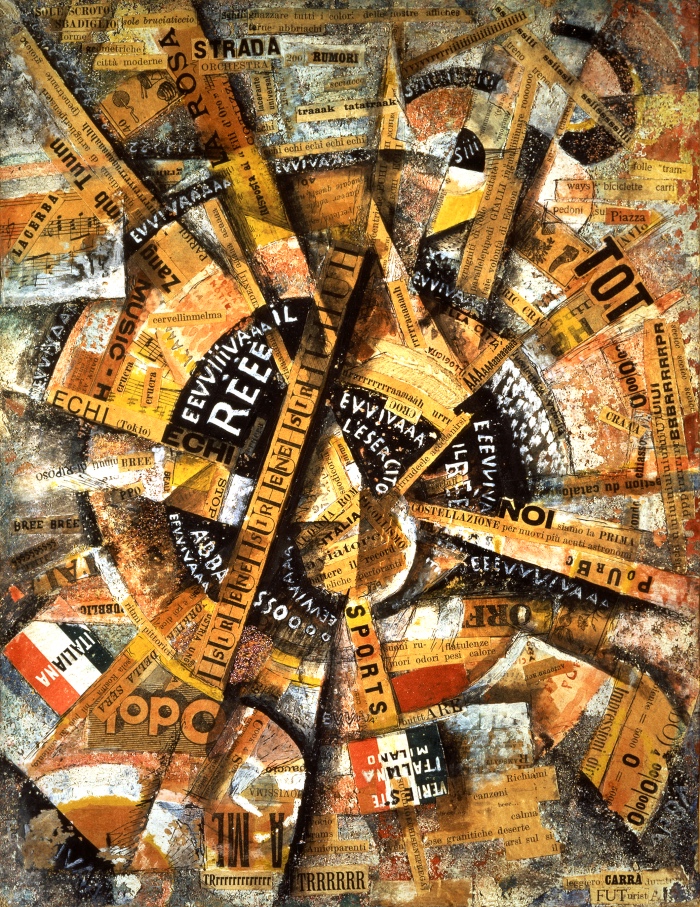Futurism

Carlo Carrà, Manifestazione interventista (1914)
Futurism
Futurism is an artistic movement of avant-garde born in 1909 with the publication in France of the Manifesto of Futurism.
The manifesto was published in the newspaper Le Figaro by Filippo Tommaso Marinetti, and it announced the beginning of the struggle against the tradition, and was in sharp contrast with the Romantic culture of the 19th century.
Futurism issued a challange: a total renewal of society.
Several artists immediately endorsed its principles, promoting the publication, in the following years, of many other manifestos concerning every single art.
In 1910, in fact, was published the “Technical Manifesto of Futurist Painters” written by the most important Italian artists in the early 20th century: Boccioni, Carrà, Russolo, Severini, and Balla.
If I had to describe Futurism in a few words I’d use: speed, revolution, war, city, theatricality, progress.
Futurist artists met up, discussed and argued, experimenting and creating new languages that could conform with the great transformations affecting social, political and artistic life in the 20th century.
In that historical period there were several contradictions, and Futurism seemed to embrace all the promises the future carried with itself, and art couldn’t be separated from politics.
For that reason, many Futurist artists became militarists and enlisted during World War I, including Boccioni who died during a military training in 1916. Other artists became politically involved and joined Fascism, such as Marinetti, and many would continue to experiment the power of image and language to communicate in a new way.
Follow me on:
About me
In this blog, I don't explain the history of art — I tell the stories that art itself tells.


